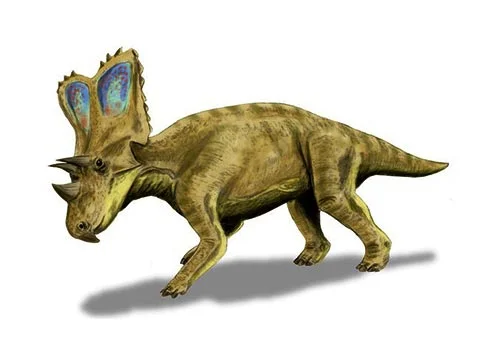Chasmosaurus (Cleft lizard)

Kazz-moe-sore-us
Lawrence Lambe – 1914
Herbivore
Estimated 6 meters long
Ceratopsian
C. belli (type), C. russelli
Canada, Alberta – Dinosaur Park Formation
Late Cretaceous, 76-73 million years ago
Chasmosaurus Facts
Chasmosaurus is a genus of ceratopsid dinosaur that lived during the late Cretaceous period, approximately 76-73 million years ago. This genus is named after the distinctive frill on the back of its skull, which was perforated by large openings, or chasms, giving the appearance of a “cleft” or “chasm.” The species Chasmosaurus belli, the best known and most thoroughly studied, is named after its discoverer, Charles H. Bell.
Chasmosaurus was a large, quadrupedal herbivore that roamed the western interior of North America. Fossils of this dinosaur have been found in Alberta, Canada and Montana, United States. Chasmosaurus measured about 6 meters in length and weighed between 2 and 4 tons. Its body was supported by strong legs, which allowed it to stand tall and reach higher vegetation.
One of the most notable features of Chasmosaurus was its skull. It had a large, bony frill on the back of its skull, which could have been used for defense, thermoregulation, or as a display structure to attract mates. The frill was perforated by large openings, which may have helped to reduce the weight of the frill, or served to improve circulation in the neck.
In addition to its distinctive frill, Chasmosaurus had a pair of large, forward-curving horns above the eyes, and a smaller horn on its nose. These horns were probably used for defense, to defend against predators, or as a display during mating rituals.
The diet of Chasmosaurus was likely herbivorous, consisting of ferns, conifers, and other low-lying vegetation. Its jaw had a deep, spoon-shaped beak that was capable of crushing tough plant matter.
Overall, Chasmosaurus was a fascinating dinosaur that played a unique role in the late Cretaceous ecosystem. Its distinctive appearance and adaptations make it an important species for paleontologists to study, and its fossils continue to provide new insights into the world of dinosaurs.



